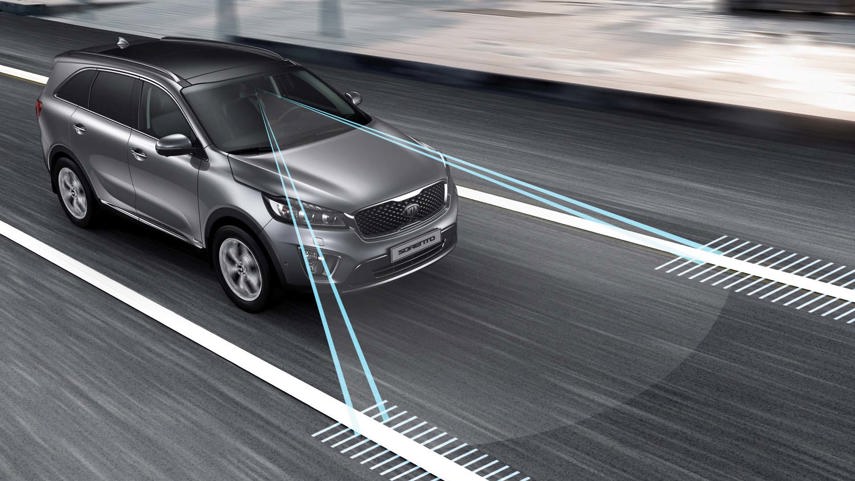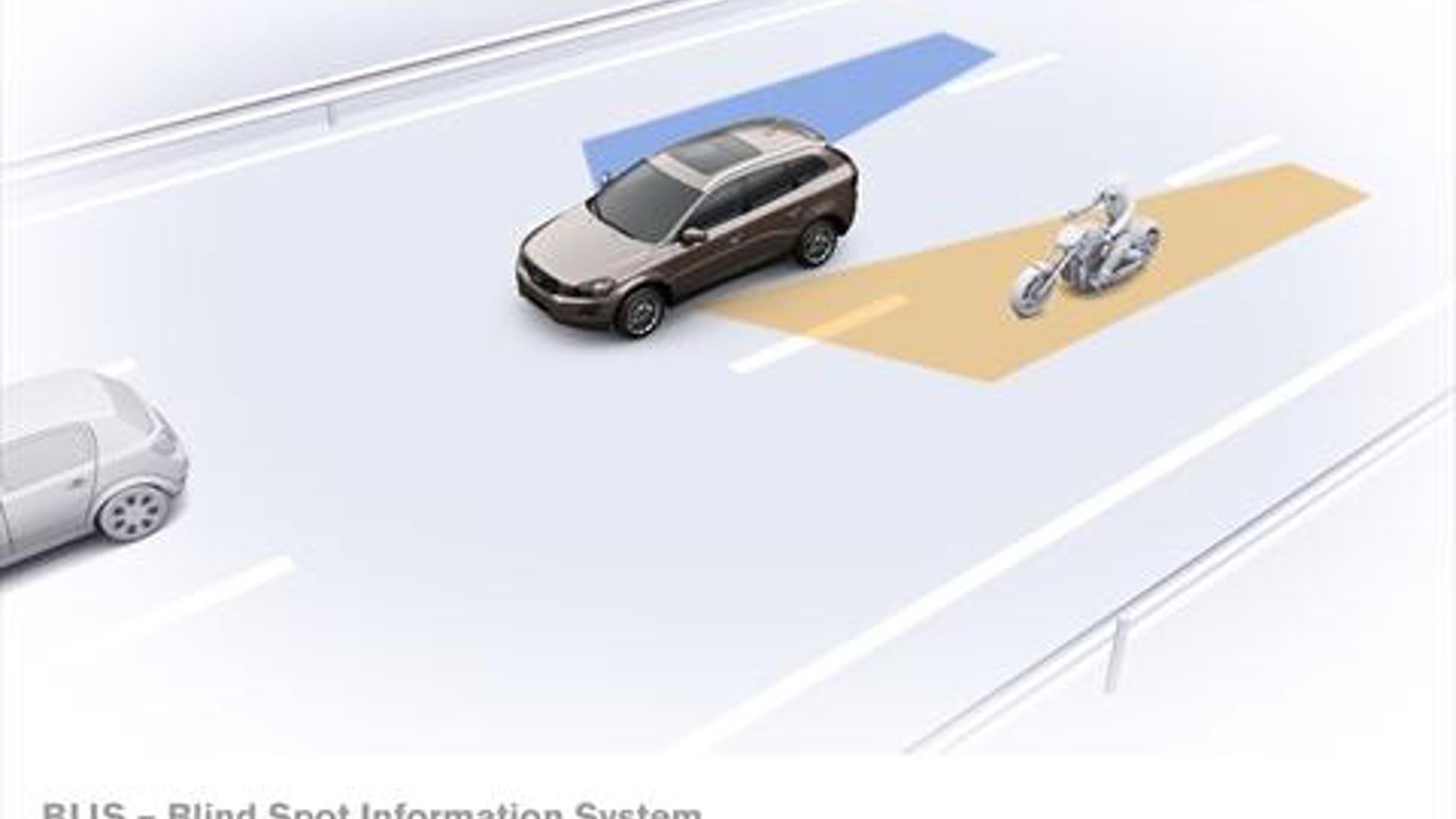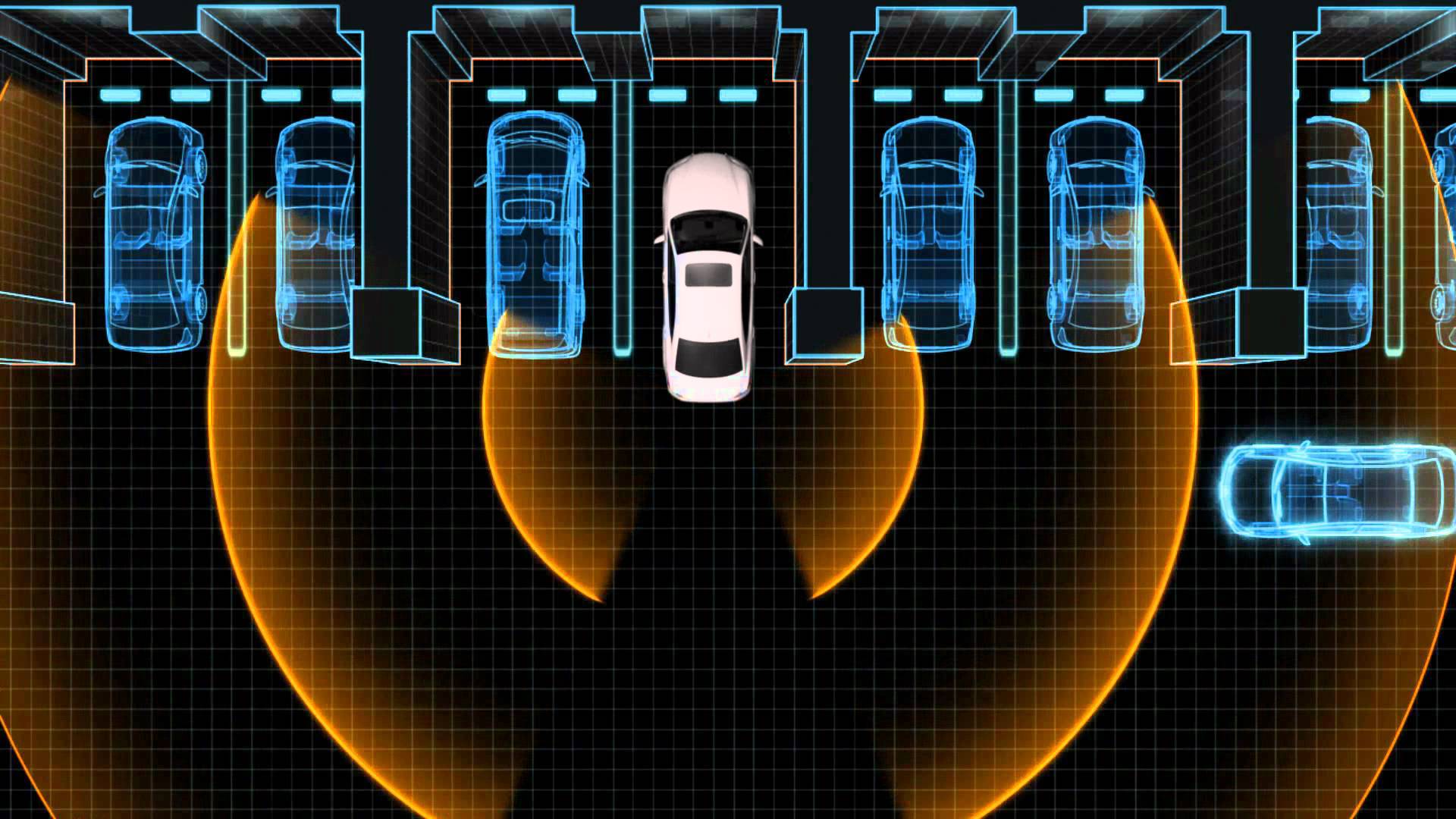If you haven’t shopped for a new vehicle in many years, chances are that a variety of advanced safety features will be optional or included on the vehicle that you may not be familiar with.
Based on extensive correspondence with readers and viewers, I suspect that many folks in the general car-buying public are not familiar with the host of advanced safety features in today’s modern car market. As automakers aim to stay competitive on all fronts, more cars are packing higher-than-ever levels of advanced hazard-detection technology at a lower price point, not just in the top trim levels.
Features like Blind Spot Monitoring (BSM), Lane Departure Alert (LDA), and Forward Collision Warning (FCW), are becoming mainstream. Some automakers are making technologies like these standard equipment on every vehicle they sell, and others will likely follow suit. Before long, technologies like the ones we’ll look at here will likely be as commonplace as power windows and heated seats.
Below, we look at some of the most common advanced safety features you’ll likely encounter in your shopping process, and a look at what to expect before your first experience using them.
System: Blind Spot Monitoring (BSM)
Other Names: Blind Spot Information System (BLIS), Blind Spot Assist (BSA), others
The Gist: if there’s a vehicle in your blind spot, BSM illuminates a warning light on (or near) the side mirror, on the same side of your vehicle. The light disappears when the vehicle is no longer in your blind spot area. This intends to warn drivers to check extra-carefully before changing lanes. If the driver signals a lane-change in the direction of a detected vehicle in their blind spot, the warning typically increases—flashing the light brightly, or sounding an audible alarm. Some BSM systems include an intervention function, which can apply slight counter-steering inputs if the driver attempts to execute a dangerous lane change, despite warnings.
Good to Know:
- The BSM warning light is mounted on or near the side mirror because drivers still need to use their mirrors to change lanes safely. Like all safety systems we’ll cover here, BSM is not intended as a substitute for safe lane changes and shoulder checks - merely an extra layer of protection designed to work with, and not in place of, safe driving.
- Typically, a BSM system will work only above a certain speed, perhaps 50 km/h. Check your owner’s manual for information on how (and when) the system works in each specific vehicle.
- BSM systems can suffer from false alarms or non-functionality in certain conditions. Driving next to a metal guardrail or in close proximity to certain types of infrastructure can confuse the system. Further, a buildup of snow or ice on sensors may stop BSM from operating properly.
- Though BSM can prevent accidental side-swiping of another vehicle, it’s important to understand that it does not work in all situations—so drive with care.
System: Forward Collision Warning (FCW)
Other Names: Frontal Collision Alert / Forward Collision Alert (FCA), Collision Mitigation Braking System (CMBS), Autonomous Emergency Braking (AEB), others.
The Gist: These systems vary in operational specifics, but they all have the same goal of alerting a distracted or tired driver when they’re closing in too quickly on slower-moving (or stationary) traffic. Typically, radar and/or cameras are used to constantly analyze and track the distance between your vehicle, and the next one in traffic. If you’re approaching a slower-moving vehicle too quickly, the system will provide an audible and visual alert so the driver can brake, or take corrective action.
Some frontal collision systems can automatically apply braking force to stop the vehicle, thereby avoiding certain types of collisions at lower speeds. Other systems can apply hard braking at higher speeds should an impact be deemed inevitable, to lessen damage and injury.
Finally, if your vehicle’s FCW system also includes Autonomous Emergency Braking, it may, in certain situations, be able to automatically stop the vehicle to prevent a collision with a pedestrian or a cyclist. It is extremely important to know exactly how and when the FCW system in your vehicle works (and when it may not). Check the owner’s manual for the full scoop.
Good to Know:
- Some vehicles use a radar component hidden in the grille or front bumper. Others use outward-looking cameras, typically mounted up high, and just inside of the windshield near the central rearview mirror. Your owner’s manual lists the location of the radar module.
- Both camera and radar components need to be kept clear for the FCW system to work. Keeping your forward radar (if equipped) clear of obstructions is vital to the operation of the system.
- Some FCW systems are only available between a certain range of speeds.
- Various environmental or lighting conditions may prevent the system from working. Further, in winter, even a thin layer of snow or slush on the front of your vehicle will block the radar, and the FCW system will shut down. In summer, excessive accumulations of bugs or other debris can have the same effect.
- Camera-based FCW systems tend to be less fussy in bad weather, since the cameras are located inside of the vehicle. This means that a clear view can be maintained by simply using your wipers.
- Do NOT attempt to test the FCW system, ever, by driving towards a vehicle, building, or person.
- The FCW system will alert the driver in situations where it’s not available. Check your owner’s manual for full details on how this works for your specific vehicle.
- The FCW system is designed to work with, and not in place of, your safe and attentive driving.
System: Lane Departure Alert (LDA)
Other Names: Lane Keeping Assist (LKA), Lane Assist, Lane Departure Mitigation, others
The Gist: The LDA system will provide an alert if the vehicle is straying from the lane without the turn signal indicator activated. Warnings may come in the form of vibrations through the steering wheel or seat, a buzz, beep, or the illumination of a warning light.
Some systems can detect and alert of an unintended lane departure, while others can apply a slight steering correction that intends to ‘nudge’ your vehicle back into its proper position. Some can even apply slight self-steering perpetually, which helps to keep the vehicle ‘magnetized’ to the centre of its lane, reducing the risk of an unintended lane departure.
Check the owner’s manual to see how this system works on your specific vehicle.
Good to Know:
- The LDA system uses a camera to observe the lane markings on the road. This allows the system to understand, in real time, the position of your vehicle on the roadway.
- If the lane markings on the road are missing, faded, or difficult to see due to water, puddles, snow or an obstruction of the camera, the LDA system will go offline.
- The driver will get a warning if the camera is obstructed or the system goes offline. Check your owner’s manual for details on this warning.
- Wet roads, puddles, tar-strips, pavement cracks, wet tire tracks on a dry road, or unusual road surfaces can also cause false alarms or knock the system offline.
- This camera-based system only works when it is able to clearly see highly visible markings on the road. The system cannot guess the position of non-existent or low-visibility lane markings.
System: Rear Cross Traffic Alert (RCTA)
Other Names: N/A
The Gist: When reversing out of a parking space or driveway, the RCTA system can detect vehicles approaching from either side that may not be visible to the driver. If an approaching vehicle is detected, the driver is warned, normally with both audible and visual alerts.
Some RCTA systems rapidly blink the BSM warning light on the corresponding side of your car, to indicate the direction of the approaching vehicle. Others use a graphical warning on the backup camera display. Typically, the RCTA system uses the same sensors as the BSM system—which are mounted in the rear corners of the vehicle, and able to see large, moving objects behind and to the sides of your car. As such, vehicles with RCTA typically also have BSM.
Some vehicles can simply warn the driver of an approaching vehicle as they back up, while more advanced versions of RCTA include an intervention function, which can automatically stop your vehicle to keep it out of harm’s way if a collision is likely.
Good to Know:
- The RCTA system does not work in all conditions. Numerous variables, including the speed of your vehicle, or speed of the approaching vehicle can impact its operation.
- Obstructions such as retaining walls or snow banks may impede sightlines.
- The RCTA system may also be affected by the shape of the laneway you’re backing into—for instance, the system can have difficulty detecting approaching vehicles if backing up into a curve in the road.
- In general, RCTA is designed to detect approaching vehicles, not pedestrians, pets, or cyclists.
- As the RCTA system may not detect every approaching vehicle, every time, it’s designed to work with, and not in place of, your safe departure from a parking space.
- Reversing into a parking space and exiting that space using your eyes and ears is safer than relying solely on RCTA to alert you of potential hazards.
System: Moving Object Detection (MOD)
Other Names: Various
The Gist: This system works by monitoring the on-screen image from a vehicle’s parking camera system. When reversing, the backup camera is activated, giving drivers a better view of the surroundings immediately behind them. In vehicles with MOD, the system looks for sudden movement behind, and in the path of, your vehicle as you reverse. Should a cyclist, pedestrian or other vehicle enter the field of view, the MOD system alerts the driver with a visual and / or audible alert. In some vehicles, a MOD warning can also trigger automatic braking, thereby stopping your vehicle, and possibly preventing a collision.
Good to Know:
- Unlike RCTA, which uses radar to ‘see’ down the laneway when drivers reverse, MOD can only detect and act on hazards within the camera’s field of view.
- The MOD system relies on a clear view from the vehicle’s backup camera. If the backup camera is dirty or blocked, the system will not work properly, or at all.
- Like all other advanced safety systems, MOD is subject to false alarms, as well as non-operation, in a variety of conditions. Check your owner’s manual.
- Like all other advanced safety systems, MOD is not a replacement for your safe and attentive maneuvering of your vehicle.
Additional Tips and Facts
Read Your Owner’s Manual
The information presented is a guideline only - as system operation and functionality varies between brands and models. It is extremely important to familiarize yourself with the operation, functionality and constraints of the specific systems fitted to your specific vehicle.
The Driver is in Control
Readers have expressed concerns about false alarms, and how those might impact their safety in cases where the vehicle is able to autonomously brake, steer or accelerate without their input. The common sentiment is some fear that the vehicle may ‘take control’ from the driver, causing a collision. System programing includes a ‘driver wins’ logic at all times, and any autonomous safety system input is cancelled quickly when the driver counters it.
Whether caused by weather, nearby infrastructure or anything else, advanced safety features can sometimes act up, behave inconsistently, or otherwise cause some degree of frustration. If this occurs, the solution is simple: turn the offending system(s) off. As the operator of a motor vehicle, it is the driver’s responsibility to know the limitations of these systems, how to use them, and how to disable them, if needed.
For instance, if your vehicle applies unwanted braking, just maintaining a foot on the throttle cancels it. If a car steers in a specific direction, simply holding course on the steering wheel will eliminate the input. Autonomous steering inputs are light, slow, and gentle - intended more as a suggestion than a means of controlling the vehicle. A vehicle cannot apply sudden, forceful or severe steering inputs that may affect one’s ability to control it. Autonomous steering inputs cannot ‘fight’ the driver. Safe drivers who are aware of their surroundings, and who have both hands firmly on the wheel at all times, have nothing to worry about.
Finally, note that some autonomous safety functions don’t engage if there’s any input from the driver. For instance, some autonomous emergency braking systems only activate if the driver is distracted and not touching the steering, throttle or brakes at all. Again, and importantly, safety is the driver’s responsibility not the vehicle’s. Drivers need to be alert and in control of their vehicle at all times. Drivers who use these systems as a means of paying less attention to the road will encounter problems.
Use Extra Caution in Winter
Advanced safety systems are most likely to turn off, issue false alarms, or otherwise act up, in winter driving when snow and salt may block the various sensors and cameras. Keeping sensors and cameras clear at all times can assist with this.
System Offline
Many readers question the effectiveness of these systems, given that they don’t necessarily work in all situations. A few facts are worth considering in this regard. First, most of these systems work very well, with few exceptions. Drivers’ will quickly become familiar with the conditions that can negatively affect the operation of the systems. Also, these systems are supplemental to safe driving, and are not a replacement for it. Advanced safety systems alert the driver when they’re not available, via an audible or visual warning. Check your owner’s manual for full details.
Not Mandatory
Use of advanced safety features is not mandatory. In most applications, these safety features can be easily disabled or overridden by the driver if desired.
They’re Not Perfect
None of these advanced safety features work perfectly 100 percent of the time. Not one. In general, they mostly work well, most of the time, though they can miss things, issue false alarms, or even apply a slight but startling corrective steering input for no apparent reason. These steering inputs are very weak, and easily overridden provided the driver is alert and has both hands on the wheel, which they always should.
Does turning an advanced safety system off make driving more dangerous? Assuming that the driver is being a safe, responsible and attentive, I’d argue that the answer is no. Again—these features could save your life, but ultimately, safety is 100 percent the responsibility of your grey matter, not microchips.
These features can save lives and prevent collisions, provided drivers understand how they work along with their limitations. If you read only one chapter of your owner’s manual, it should be the one on these safety features. Drive safely.



